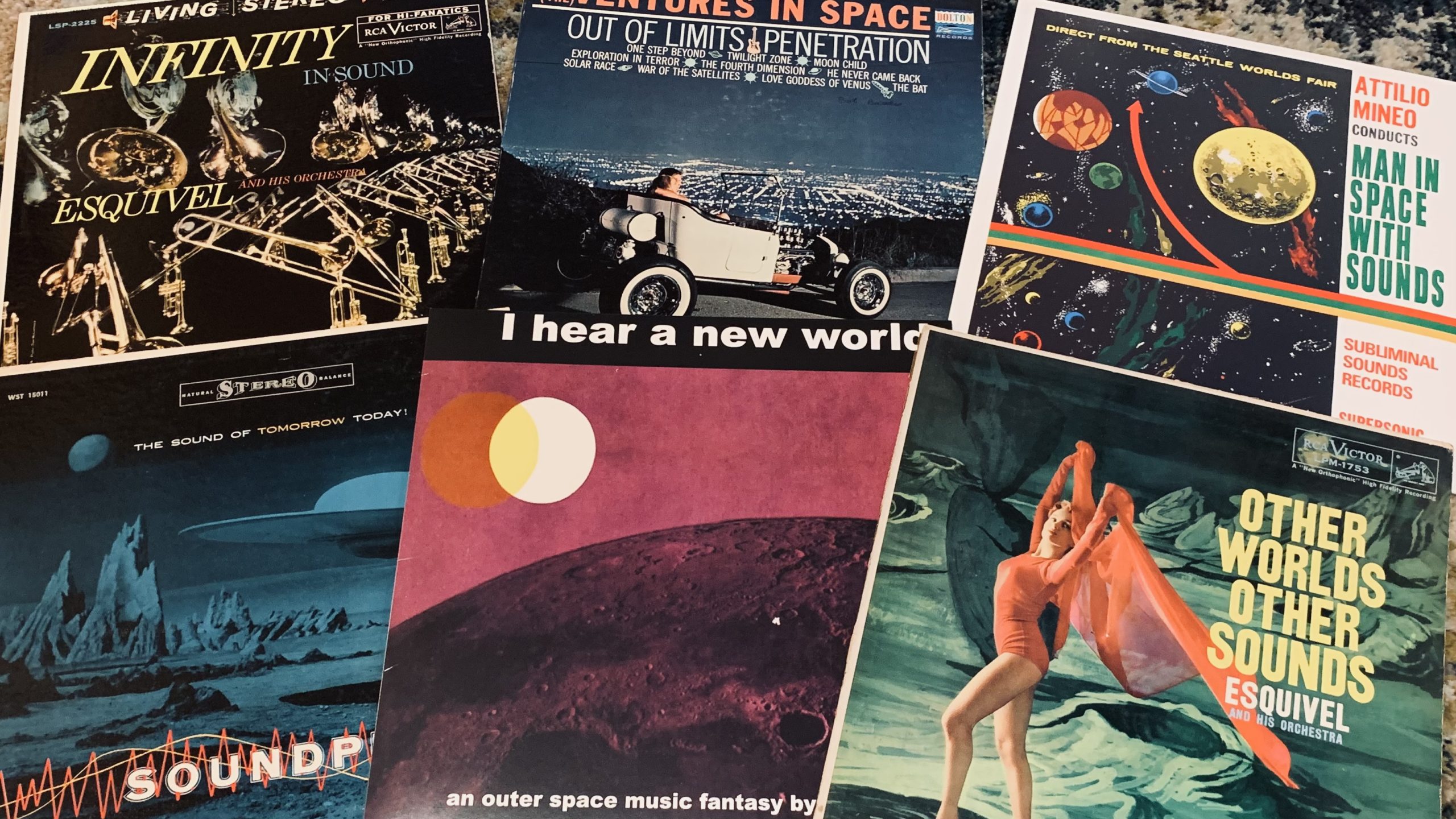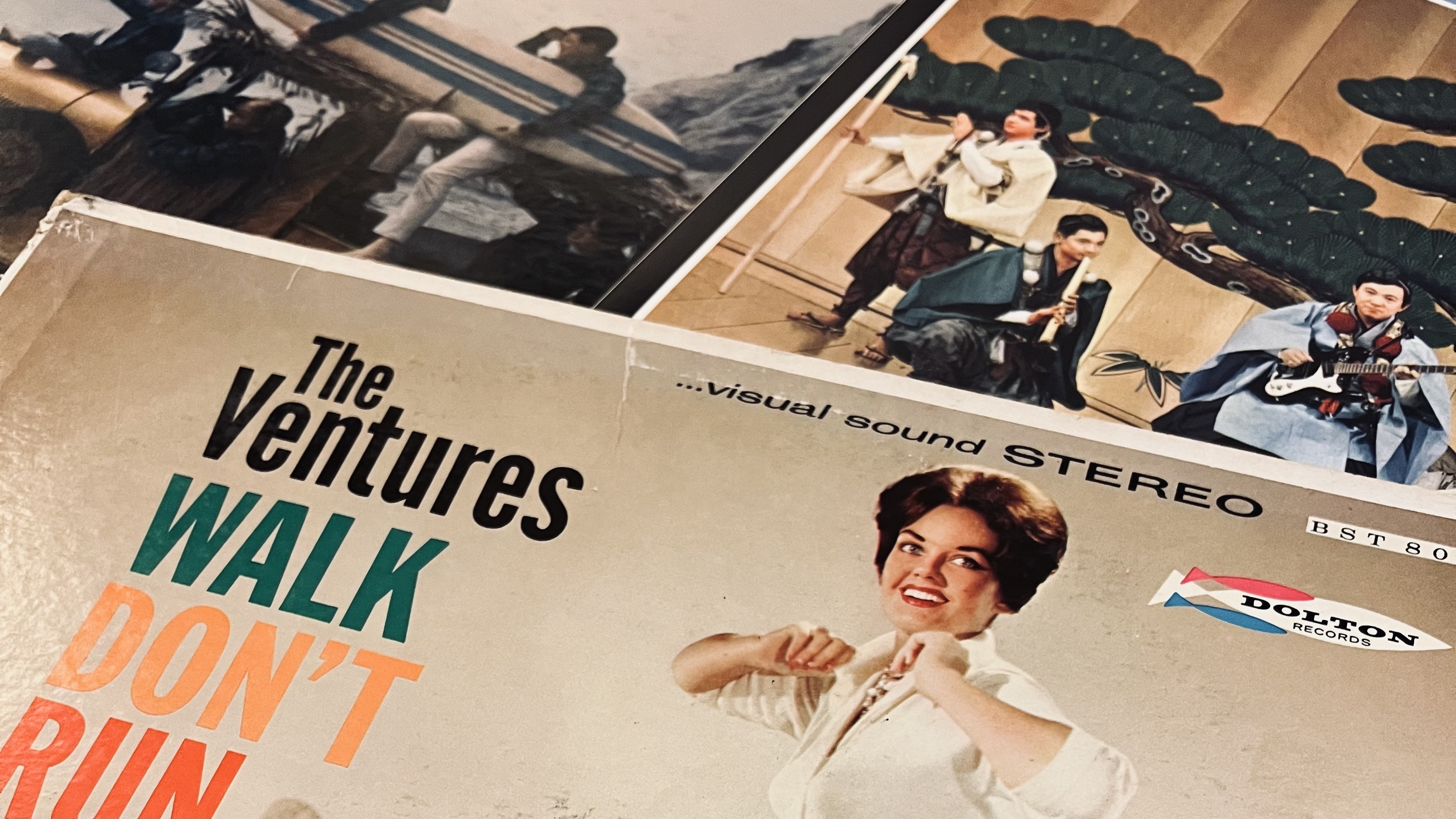
What good is any road trip without at least one unscheduled detour? This week, Strange Currencies takes a moment away from our ongoing survey of American garage rock to focus on a genre that is intrinsically tied to the garage scene. Grab your board, some huaraches, and a Pendleton, because we’re headed to the beach for a surfin’ safari.
Like all musical genres and movements, surf rock was the result of a gradual evolution rather than a singular “big bang” moment. Emerging from the instrumental rock trend of the late-fifties – and influenced by the still-thriving exotica craze – surf musicians capitalized on both public interest in expressive rock-and-roll, and new technology to create a vibrant, evocative sound. Of those innovations, it was the electric guitar that would dominate surf rock, and particularly the Fender company: whose still-recent solid-body Telecaster, Stratocaster, and Jazzmaster models, Twin Reverb amplifier, and newly-debuted stand-alone reverb unit would define the genre.
While there were a handful of innovators and instrumental virtuosos who engaged in the surf craze, one did not need to be an expert musician in order to participate. Several of the best surf tracks are remarkably uncomplicated pieces, with their charms derived from the minimalist joy of well-placed notes and their long, reverb-aided decay. To put it another way: this music sounds great, and is generally easy to play. This simplicity helped to keep surf music within the democratized tradition of early rock-and-roll, and it led to the proliferation of young surf combos from coast to coast during the early-sixties.
The limited stylistic confines of surf music meant that it had a similarly-limited shelf life as a commercial endeavor. After the genre’s 1962-63 peak, surf quickly faded into the background of the American rock scene, and was little more than a blip after the early-1964 arrival of The Beatles. Suddenly, these hundreds – if not thousands – of surf combos realized that the future lay in writing their own compositions, complete with vocals, to meet the demands of a changing market. Thus, the garage rock movement was born.
The feature that follows traces the evolution of instrumental rock into the surf sound, and largely focuses on the aforementioned peak years of 1962-63. And while the base of it adheres to the Garage Rock Summer standard of thirty tracks in under eighty minutes, we’ve added a half-dozen extra songs that show the growth of surf music beyond the United States. Consider it a “bonus EP”; plus, we still get you out in less than an hour-and-a-half. In a reversal of recent trends with these features, Spotify comes up strong here. Only one track – The Pharos’ excellent “Pintor” – was missing. You can find that one on the full YouTube playlist below. Enjoy!
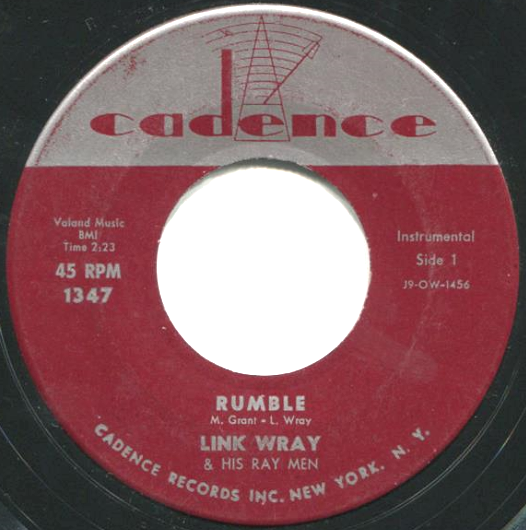
While it’s more likely to evince visions of a dusty roadside or a roughneck bar, the signature recording from Link Wray & His Ray Men was among a handful of early instrumentals to suggest exciting new possibilities for rock-and-roll music in the realm of world-building. Wray’s guitar sound in “Rumble” was famously achieved after he punctured the cone of his amplifier speaker in an attempt to gain a grittier, more “live” sound. It would be an enormously influential track, and a critical signpost on the road to surf rock.
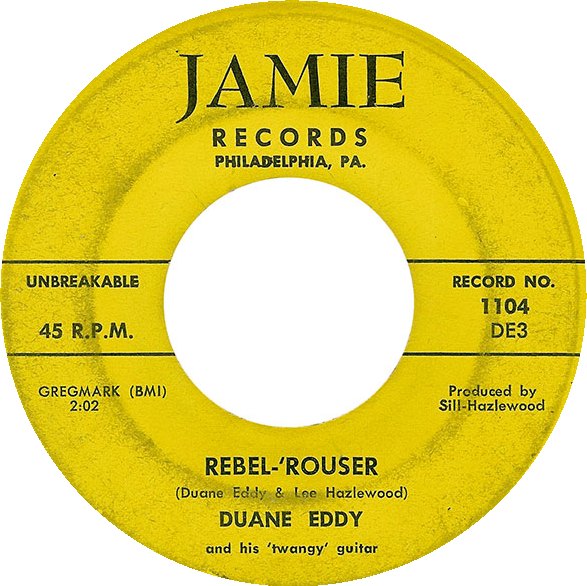
Duane Eddy made a name for himself on the Phoenix rock scene with his signature “twangy” guitar sound, but it was his third single that would elevate Eddy to national attention. Co-produced by his friend and Phoenix-area partner in crime, Lee Hazlewood, “Rebel-‘Rouser” features Eddy’s Gretsch in top flight, with its clean, lyrical lead providing a wholly-effective hook in lieu of lyrics. Like “Rumble” before it, “Rebel-‘Rouser” is another great example of the fine line that would come to separate the guitar melodies of ‘western’ and ‘surf’ music.
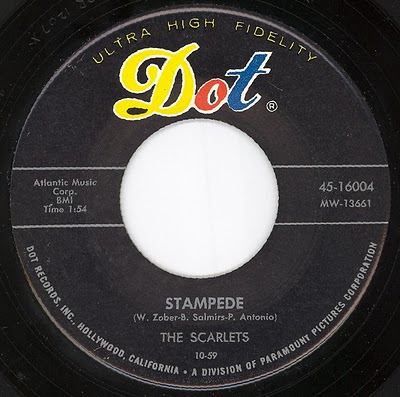
Okay, combine the grit of Link Wray with the melodicism of Duane Eddy, and you end up with something like The Scarlets’ lone A-side, “Stampede.” The New York group may not have been considered surf rock when this single dropped in 1959, but looking back on it after the fact, many of the elements of the emergent genre were in place on this electrifying track.
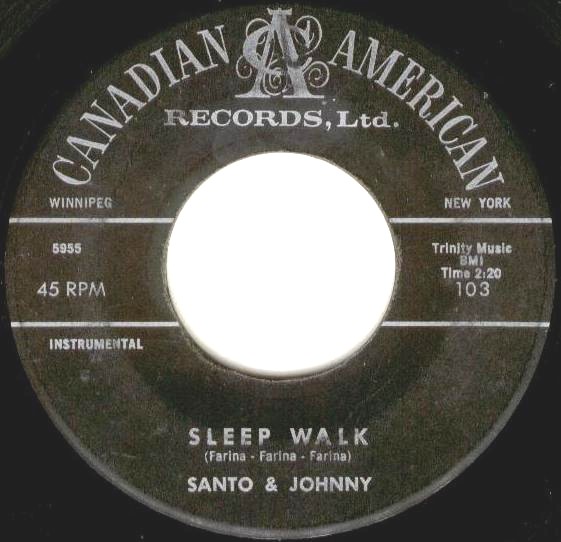
The primary purpose of instrumental music is to transport the listener to an evocative place, outside of their ordinary experiences. No pre-surf instrumental rock track better displays that transformative quality than Santo & Johnny’s 1959 masterpiece. Its title may not promise far away places and exotic locales, but “Sleep Walk” conjures a hazy, dream-like atmosphere that is lush, cinematic, and impossible to resist.
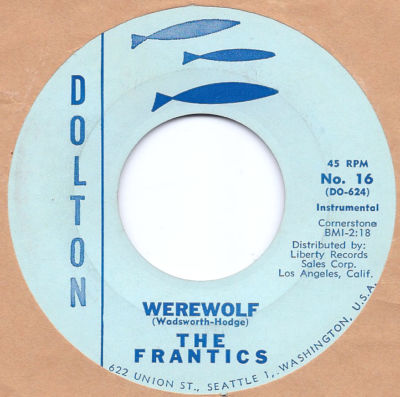
We’re getting a little closer now. Hailing from Seattle, The Frantics were coastal – if not exactly from a surf Mecca – and if “Werewolf” doesn’t exactly evoke crashing waves and sea foam, it’s still plenty vivid regardless. Guitarist Ron Petersen stays in that sweet spot between melodic and jagged, and the menacing sound effects add to an already ominous atmosphere.
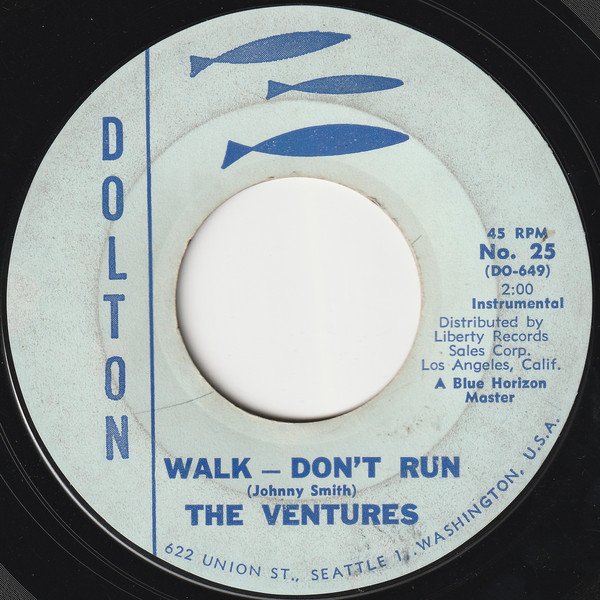
Just a handful of miles down Interstate 5, in Tacoma, The Ventures bring us even closer to the classic surf rock sound with their breakthrough hit. A lively interpretation of Johnny Smith’s 1954 jazz composition, “Walk – Don’t Run” highlights expressive guitars, which are supported by a drumbeat that will undoubtedly return in several of the songs to follow. If this one wasn’t considered surf at the time of its release, it has certainly been grandfathered in to the movement. Still, leaving nothing to chance, The Ventures would re-record the song in 1964, this time with the descending riff and wet reverb sound that followed in the wake of the original version.
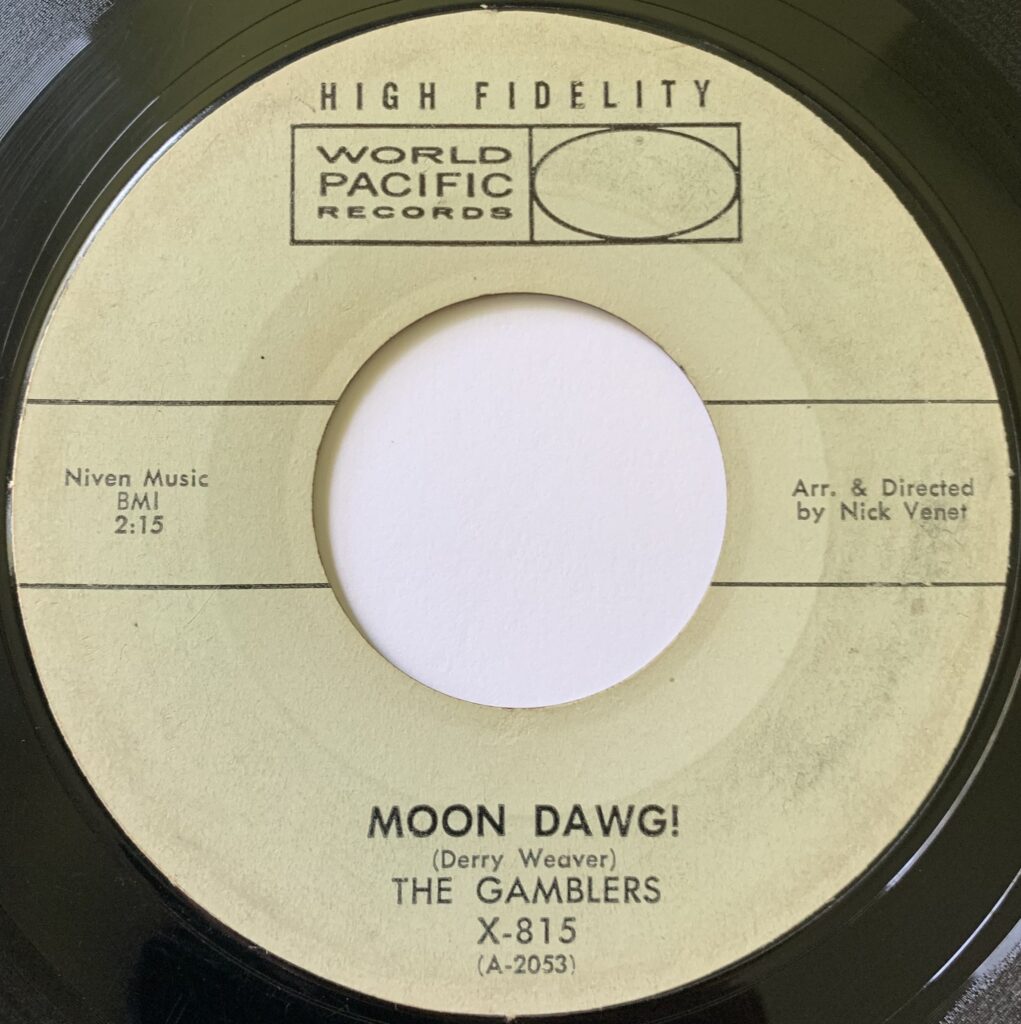
Okay, now we’re getting some tempo going! Heading down to Los Angeles, we catch up with the scorching sound of The Gamblers: a band that would cut only two singles, but one of which lives in surf rock legend. “Moon Dawg!” arrived in 1960, right around the time that area kids were starting to gravitate towards the high-energy performances that would soon become inexorably linked to the emergent surfing craze.
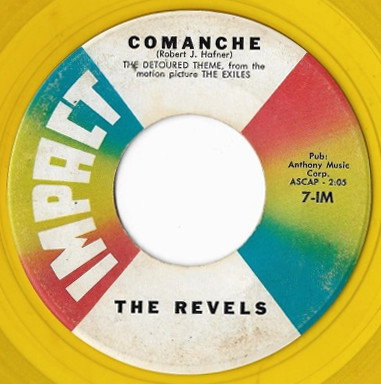
Further up the California coast in San Luis Obispo, The Revels were a somewhat-typical instrumental rock combo in their early years together. By the early-sixties, they began incorporating some of the stylistic hallmarks of their area peers, parlaying that into a successful stint on the surf scene. Their 1961 A-side “Comanche” was written by producer/songwriter Robert Hafner, who originally intended for the song to reflect the plight of Native Americans. Somewhere along the way, the message got lost, as “Comanche” became a party song and soundtrack staple instead.
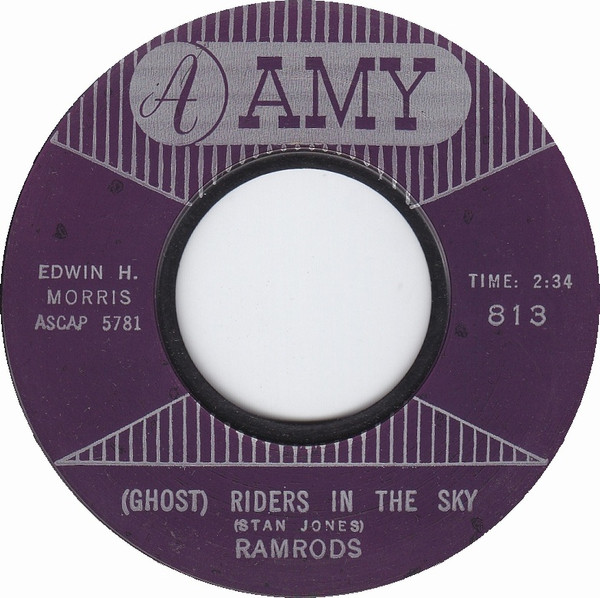
On the other side of the country, in Connecticut, another instrumental band also turned to the Old West to craft their own proto-surf classic. A lyric-less interpretation of “(Ghost) Riders in the Sky” – a 1949 hit for Vaughn Monroe – this track finds The Ramrods engaging in the time-honored tradition of adapting a familiar tune into a new style. It proved to be a successful formula, as “Riders” would chart in both the United States and Great Britain upon its 1961 release.
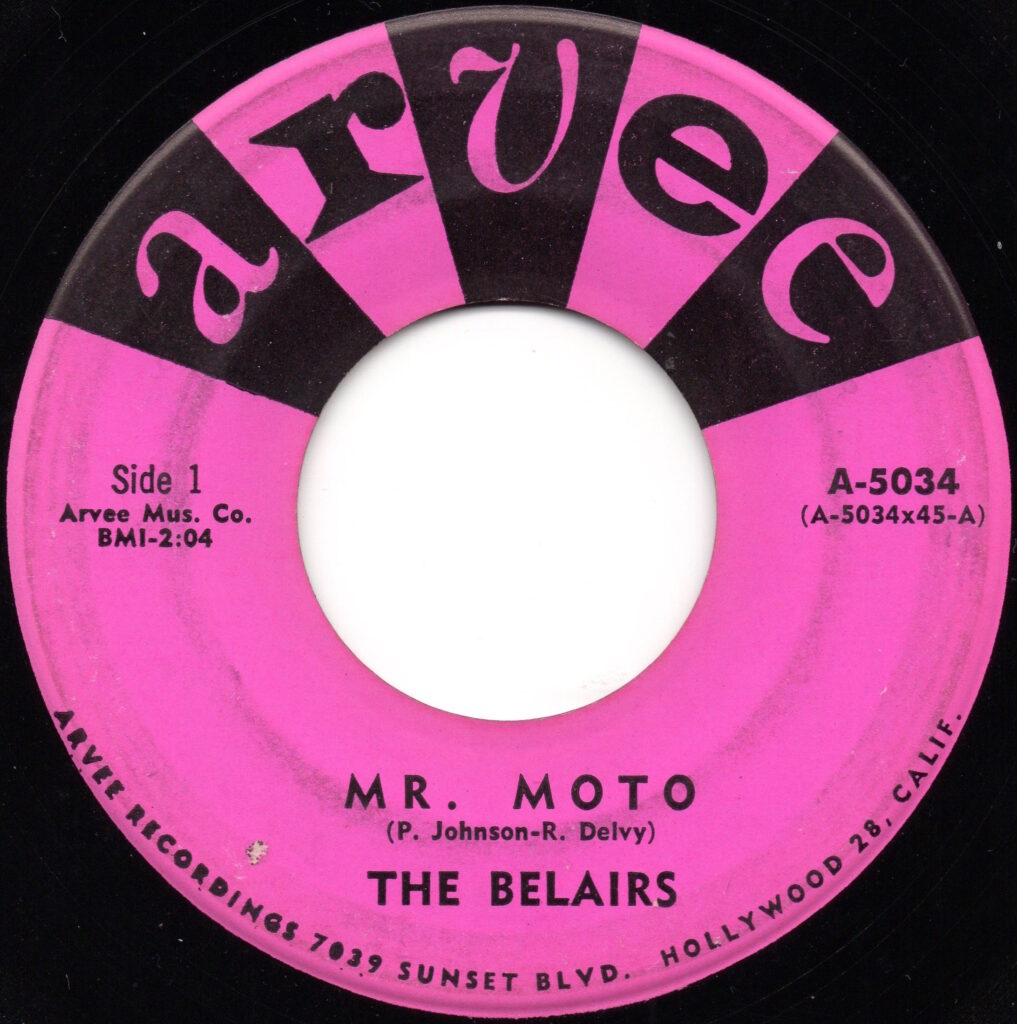
Back to Los Angeles, we catch up with The Belairs, whose signature recording is one of the definitive early surf rock tracks. Highly melodic – and an original composition to boot – “Mr. Moto” finds the quintet using a surprisingly lush palette, incorporating the expected guitar, bass, and drums, but working in a honking saxophone and an inventive piano interlude.
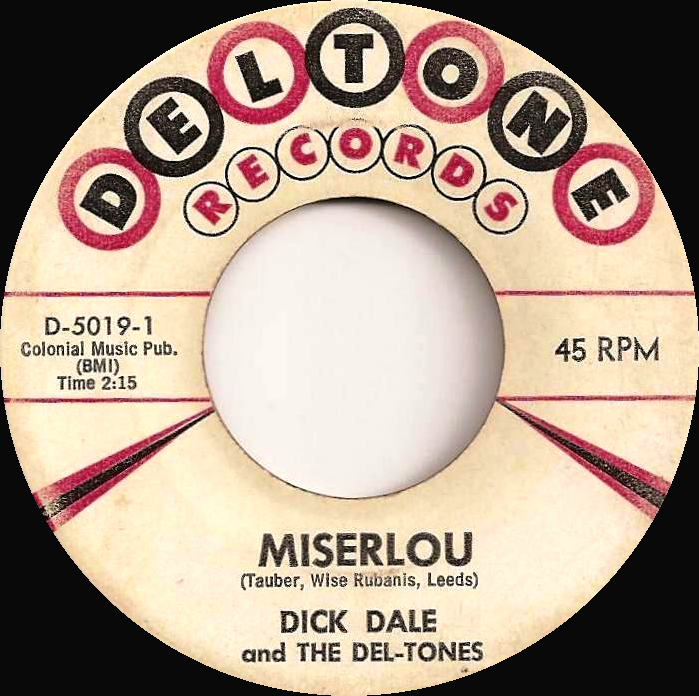
And he we are. While I could have picked Dick Dale’s 1961 hit “Let’s Go Trippin'” – as it arrives closer to the inflection point for surf rock – it really felt necessary to include the definitive surf track instead. “Miserlou” is one of the great rock instrumentals: an inventive homage to Dale’s Lebanese heritage; like little that had ever come before; and still a thrilling listen, sixty years after its initial arrival. When one thinks of instrumental surf rock, this is (justifiably) the song that first comes to mind.
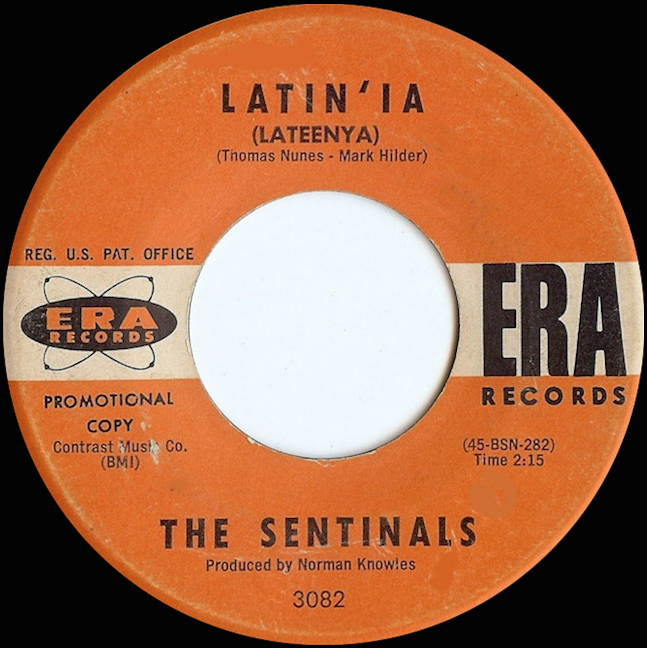
Another group from San Luis Obispo, The Sentinals frequently incorporated the Latino influences that surrounded them into their own music. No track in the band’s discography better displays this than “Latin’ia,” which stands as their definitive recording. In both its melodic content and unique percussion, “Latin’ia” is one of the finest examples of cross-cultural influence in instrumental rock music.
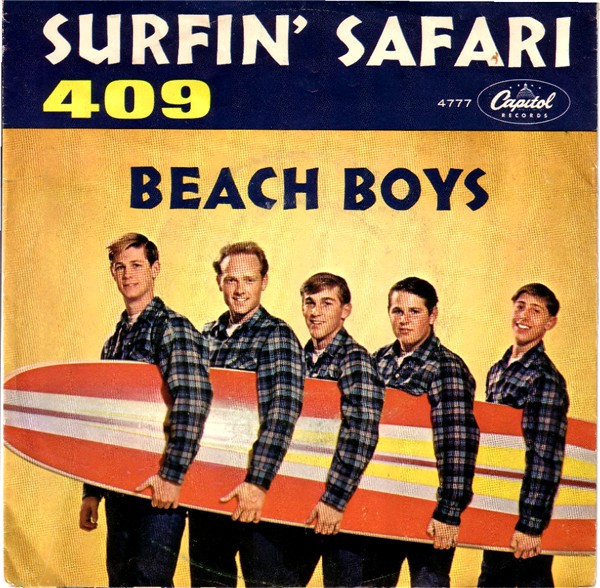
You knew they had to be here, right? In 1961, Brian Wilson summoned his brothers, cousin, and a neighborhood friend to his parent’s garage in suburban Hawthorne, California with the idea to turn their occasional vocal workouts into an actual rock-and-roll group. Working quickly – and with thematic inspiration from his younger brother Dennis – Brian crafted a song, “Surfin’,” that would become a local hit. Its follow-up, “Surfin’ Safari” represents the first artistic leap that would eventually culminate in Wilson crafting the greatest American pop album of all-time. But that’s a story for a different day. For now, here are The Beach Boys as they first appeared: a young and hungry garage band that wrote catchy songs about surfing.
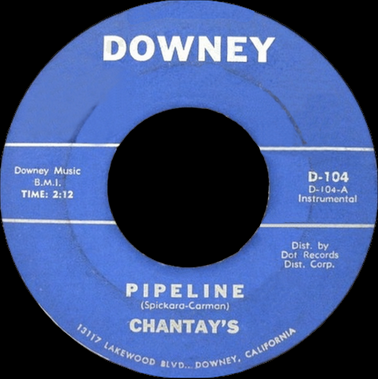
Originally conceived as a western-inspired track, Orange County’s The Chantays recast “Pipeline” in a more surf-friendly light following the breakout success of Dick Dale’s “Let’s Go Trippin'” and “Miserlou.” The song would become a top ten hit on the American charts, and it stands as one of the finest – and most effortlessly-enjoyable – classics of the surf rock era.
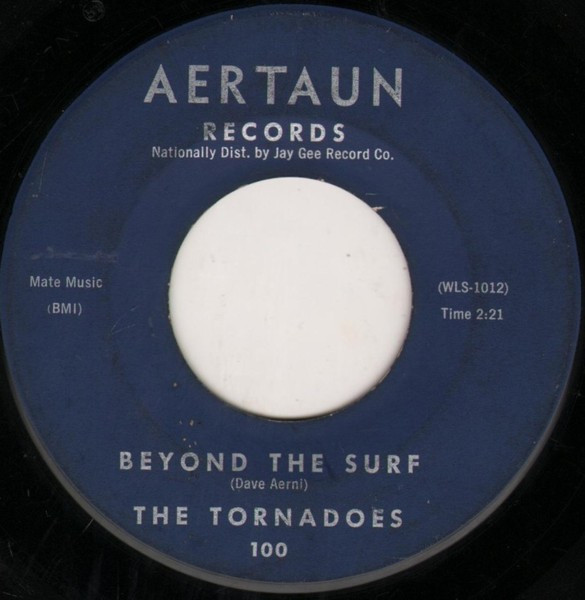
While its A-side, “Bustin’ Surfboards,” was the hit, “Beyond the Surf” is a far more evocative track from Redlands, California’s Tornadoes (not to be confused with the British group of “Telstar” fame). It’s a perfect example of both the simplicity and transportive nature of the best surf tracks, as it conjures an impressive atmosphere with a minimal arrangement.

Minor-key and surf go well well together, as evidenced by this track from The Beachcombers. While the RateYourMusic page for the group refers to them as originating from Aberdeen, Washington, this 1962 single appears to be the work of a different band altogether – one that apparently featured Mickey Rooney Jr. among its members.
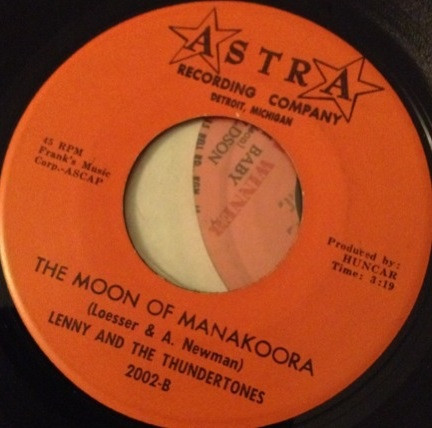
The incomparable Numero Group is the best in the business at digging up forgotten gems, and this track from Detroit’s Lenny & The Thundertones is yet another fine example. Appearing on the label’s excellent 2018 compilation Technicolor Paradise, “The Moon of Manakoora” was the B-side to the group’s 1962 single, “Homicidal.” Its languid pace and sleepy atmosphere recall the aforementioned Santo & Johnny classic.
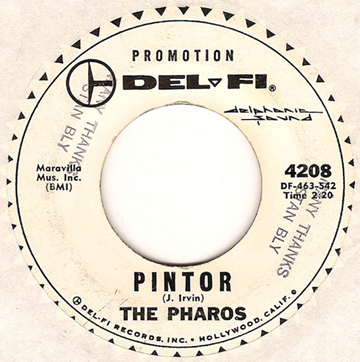
1963 was arguably the defining year for the surf rock genre, and this single form La Puente, California’s The Pharos is one of the best that the year had to offer. Another track that melds surf rock with Latino influences, “Pintor” beautifully reflects the heritage of guitarists Cesar Aliviado and Emilio Martinez, and packs in a few other melodic and rhythmic surprises to boot.
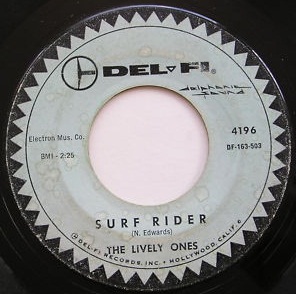
One of three songs from this feature to appear on the soundtrack to Quentin Tarantino’s 1994 classic Pulp Fiction, “Surf Rider” helped to spark a mini surf revival in the mid-nineties. In its own time, The Lively Ones’ signature recording was merely another excellent and expressive entry from the peak era of the California surf craze.
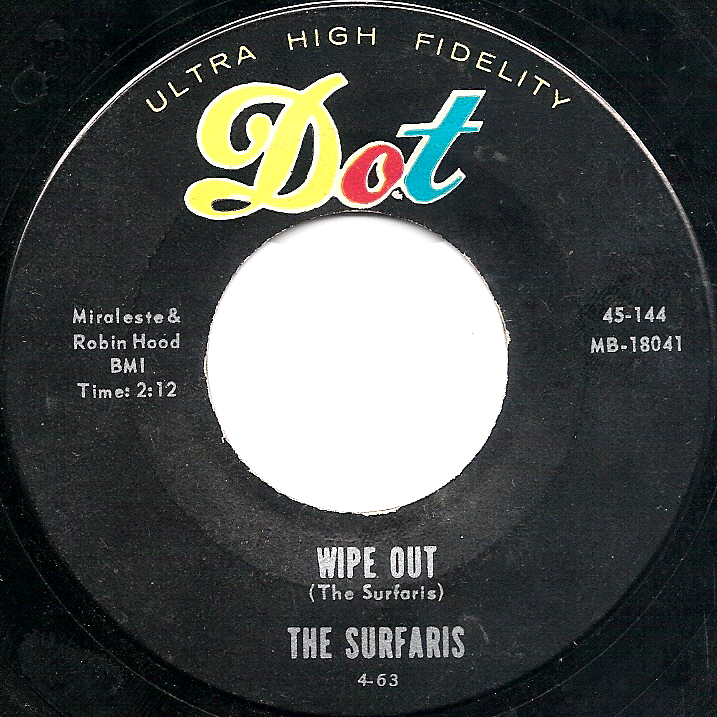
Undoubtedly one of the most iconic tracks – and biggest hits – of the surf era, “Wipe Out” rode its wave all the way to the #2 position on the Billboard pop charts during the summer of 1963. An essential component of the Rock 101 curriculum for any aspiring guitarist or drummer in the mid-sixties, “Wipe Out” stands as one of the era’s most notable one-hit-wonders.
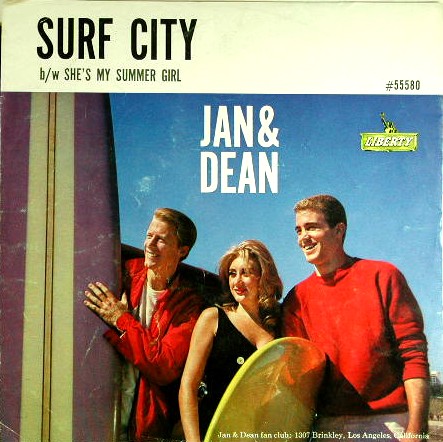
Yeah, it comes off as a pretty blatant ripoff of the formula that The Beach Boys had recently perfected, and there’s a perfectly good reason why. Jan & Dean’s signature hit was actually written by Brian Wilson, who offered it to the group, much to the chagrin of his father/manager, Murry Wilson. Aided by some key members of the famous Wrecking Crew studio musicians, “Surf City” would rocket to the top of the American charts in the summer of 1963.
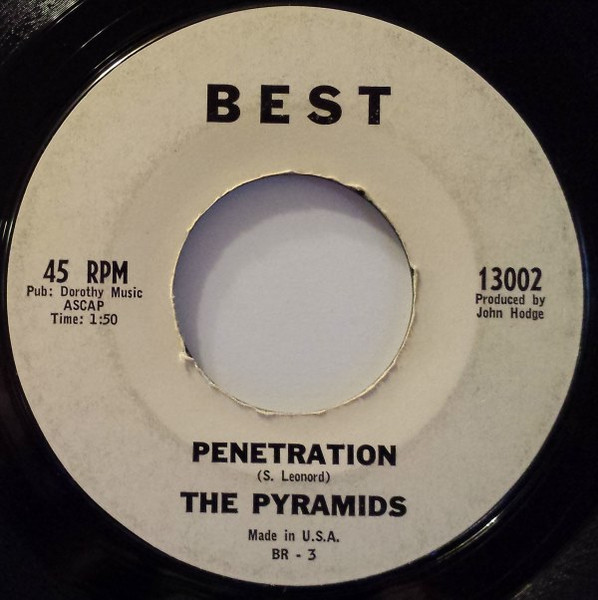
Among the countless surf rock groups to emerge from southern California in the early-sixties, Long Beach’s Pyramids would be one of the most successful. Their most famous recording, “Penetration” capitalized on the crest of the surf craze, landing in the Billboard top twenty in early 1964. It’s less in-your-face than some of the genre’s other big hits – or than its name might suggest – but the subtleness of the song is charming nonetheless.
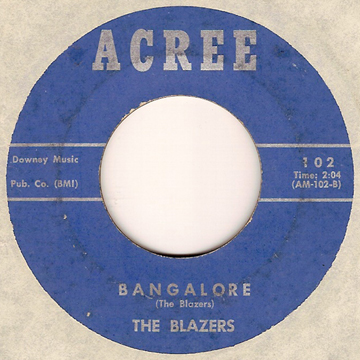
More from the Dick Dale school of surf rock, the signature track from The Blazers is befitting of the Fullerton, California group’s name. “Bangalore” matches its Middle Eastern-inspired melody with blistering guitar work and ample pacing to create one of the true classics of the surf genre.
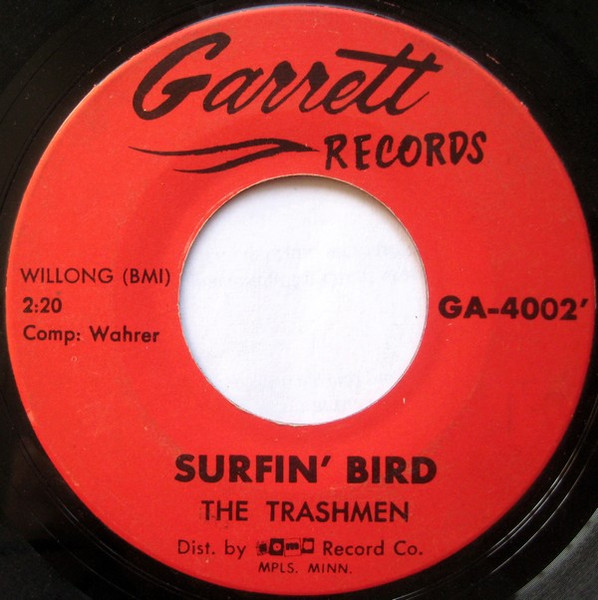
Sure, it’s annoying as all hell, but there’s an undeniable charm to this oddball hit from The Trashmen. While Minneapolis wasn’t anybody’s idea of a surf city, this group of local goofs helped in putting the midwest on the radar of surf rock fans nationwide, as “Surfin’ Bird” reached #4 on the Billboard charts following its late-1963 release.
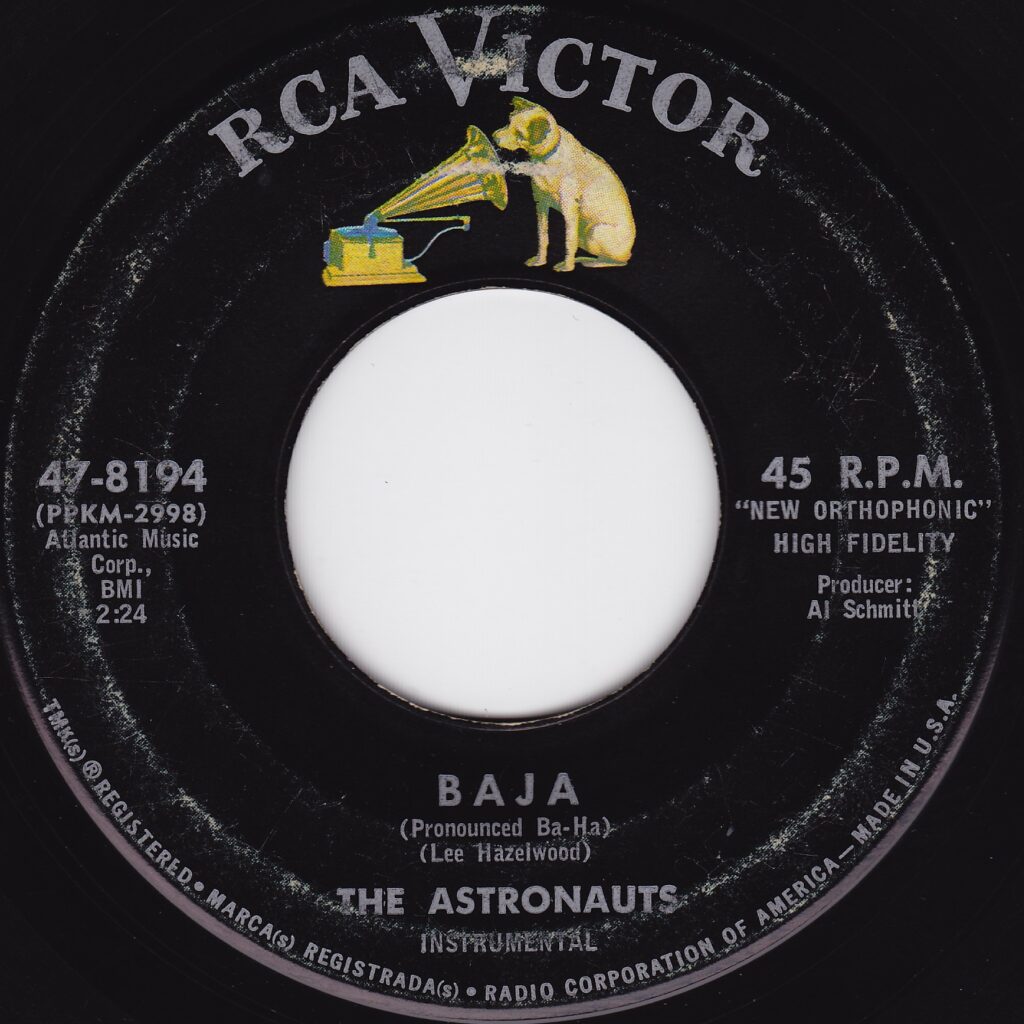
Likewise, Boulder, Colorado wasn’t exactly teeming with surfers, but a local band would craft one of the most indelible surf rock tracks of the genre’s peak era. The Astronauts were far more prolific than most surf combos, but “Baja” stands as the peak of their catalog. Characterized by the “drippy” effect provided by a Fender reverb unit, the song carries ample melody and atmosphere.
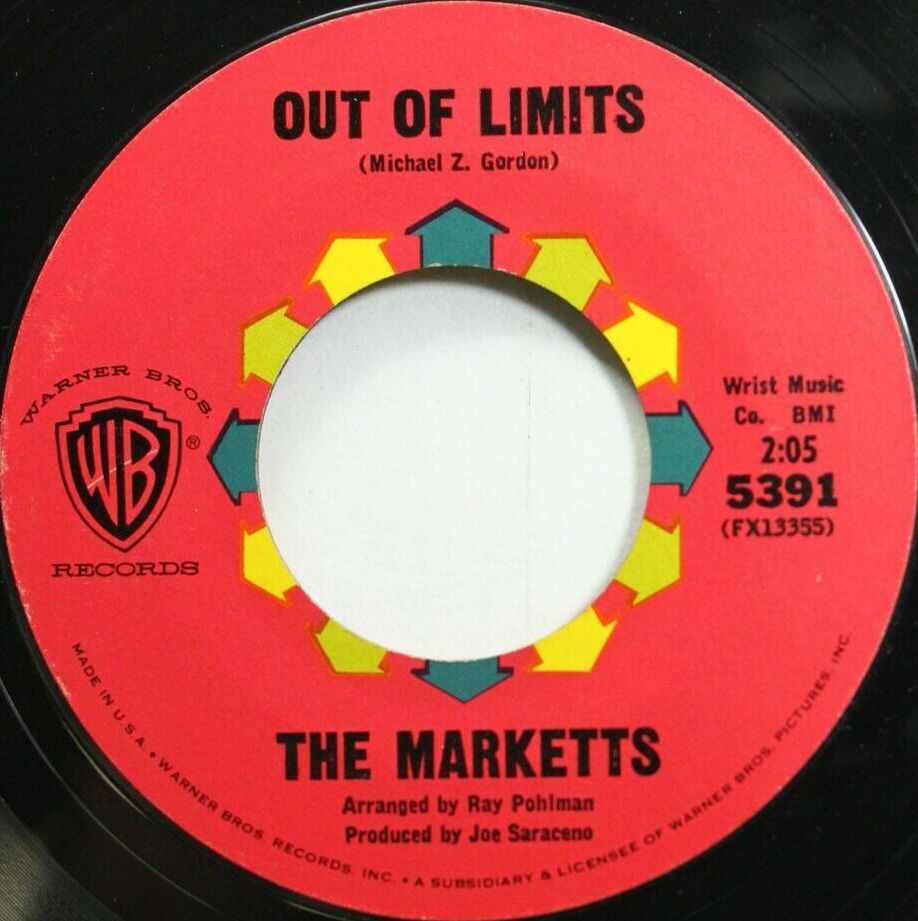
Formed by some of the key figures of the Wrecking Crew (Tommy Tedesco, Hal Blaine, Carol Kaye, and others), The Marketts were one of the most professional groups to take a stab at surf rock. There’s an element of the theatrical that one would expect from a gang of Phil Spector associates, and accordingly, “Out of Limits” would become something of a soundtrack staple.
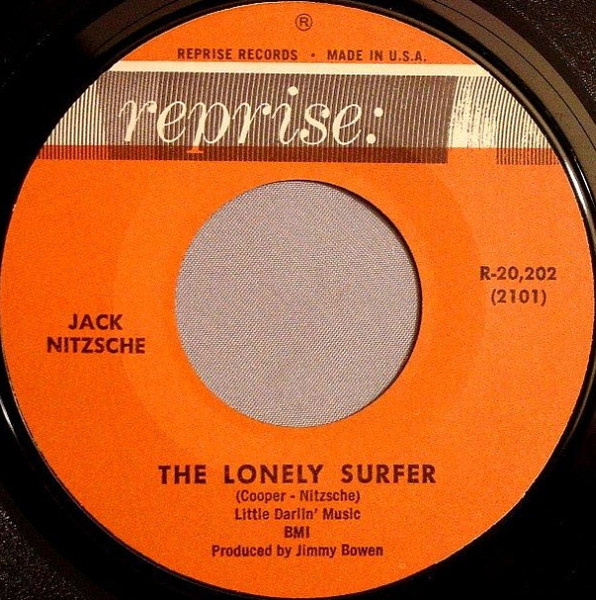
Similarly cinematic, Jack Nitzsche’s “The Lonely Surfer” is among the most sophisticated examples of the surf sound. Nitzsche would in time become a highly successful soundtrack composer, and his deft abilities as an arranger are on full display in this – one of his earliest major works.
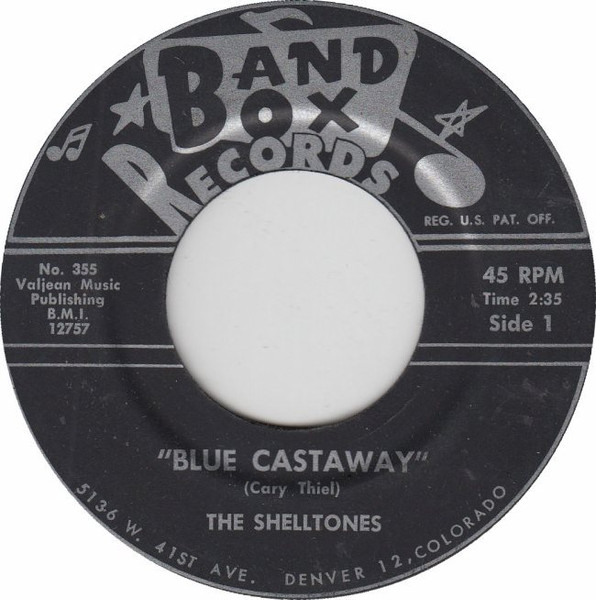
Another track rescued by the Numero Group, “Blue Castaway” was featured on 2018’s Technicolor Paradise. The intriguing song finds The Shelltones – a band from the Denver suburb of Commerce City – crafting a rich atmosphere from a surprisingly limited arrangement.
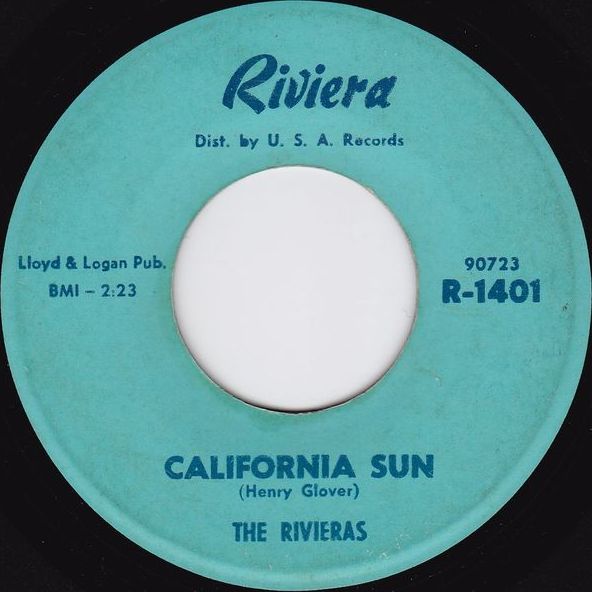
Hailing from South Bend, Indiana – where they attended Central High School as teenagers – The Rivieras scored a huge hit with their cover of a 1960 song by Joe Jones. “California Sun” draws some influence from the surf rock sound, but it’s largely an ode to the allure of same coast that had produced a majority of the previous two years’ surf hits. The stylistic allusions to fifties-era rock-and-roll only heighten its appeal to youthful idealism.
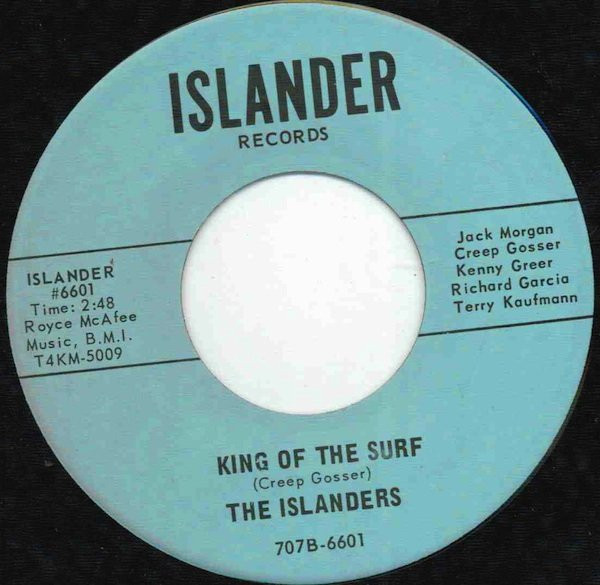
We end the official (American) portion of our program on a downbeat note, and with another excellent Numero find. From San Benito, Texas, The Islanders had reasonably close access to the coastline of the Gulf of Mexico, but they sound profoundly homebound on “King of the Surf.” The song’s melancholy melody and wordless vocals give it an exquisitely dream-like quality.
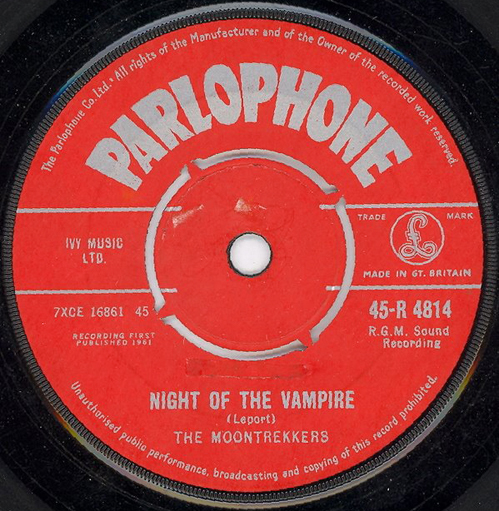
Our first international example of surf rock is this stomping, nightmarish track from London’s Moontrekkers. “Night of the Vampire” crafts an ominous atmosphere, but one that stays stylistically in line with the sound of contemporary surf rock, with its over-the-top reverb and shuffling drumbeat.
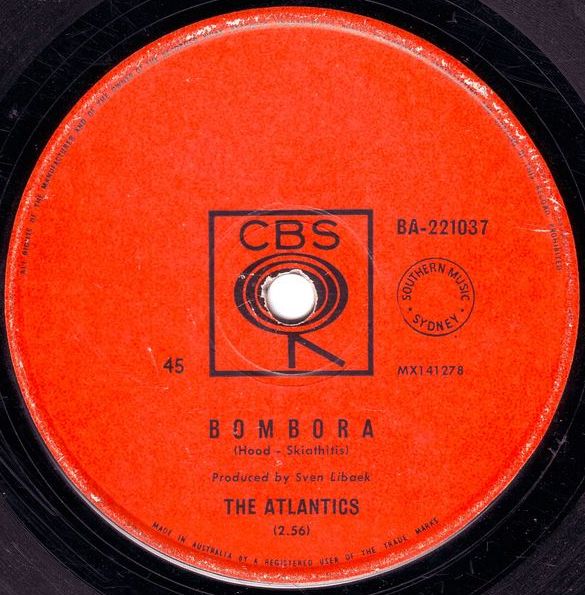
Next, we head to Sydney, Australia for this energetic blast from The Atlantics. “Bombora” is a fantastically frenetic piece, led by its pounding tom drums, furiously-strummed rhythm guitar, and twangy lead guitar work. Though it came from the other side of the world, it’s a pretty convincing facsimile of the American surf rock sound.
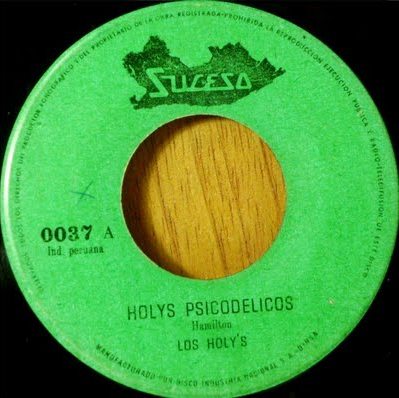
On “Surfin’ Safari,” The Beach Boys mention how surfing had become a past-time on the shores of Peru. This track from Los Holy’s shows that the surf rock sound had made its way to the South American nation as well. “Holys psicodelicos” arrived well after the North American peak of surf rock, but it’s an excellent example of Peruvian surf/garage rock.
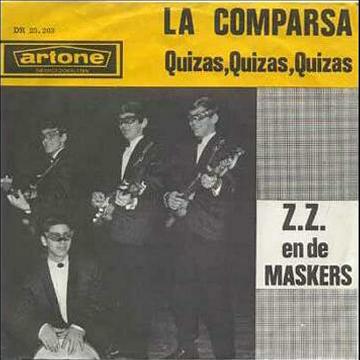
I found this one while doing research for a recent feature on the Nederbeat scene. ZZ & De Maskers were a successful Dutch group that also dabbled in the garage sound, but they absolutely nail an impressively cinematic vibe on this gorgeous rendition of “La comparsa.”
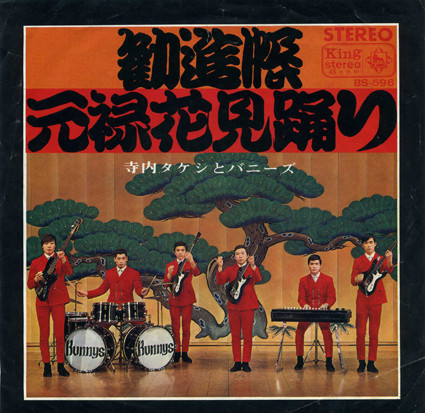
Other than (perhaps) “Miserlou,” this is the most badass guitar performance on this entire list. Tokyo-born Takeshi Terauchi would become one of Japan’s biggest guitar heroes on a string of outstanding recordings, but “Ganroku Hanami Odori” stands as one of his definitive pieces, and features similarly inspired work from his backing group, The Bunnys.
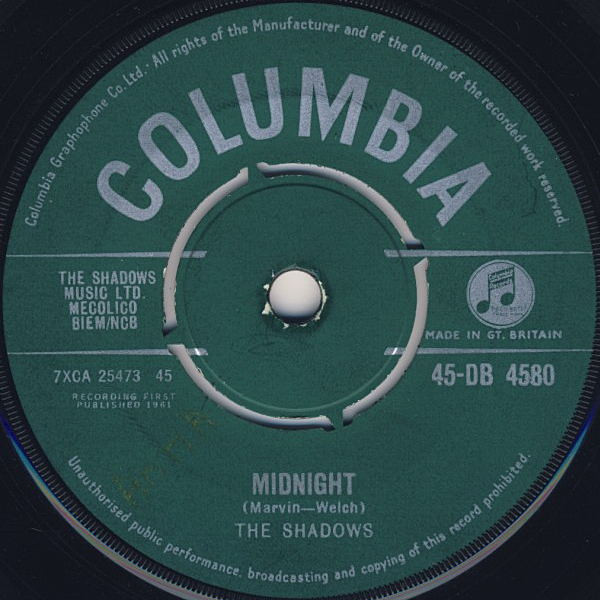
We end with a track from the most notable British instrumental rock group of the pre-Beatles era. In fact, The Shadows were a huge influence on the Fab Four, as well as a host of bands on the other side of the pond. While the outstanding “Apache” is the group’s signature recording, it feels appropriate to end this examination of the surf sound on the languid, dreamy, and exquisite “Midnight” – easily one of the band’s finest moments.



